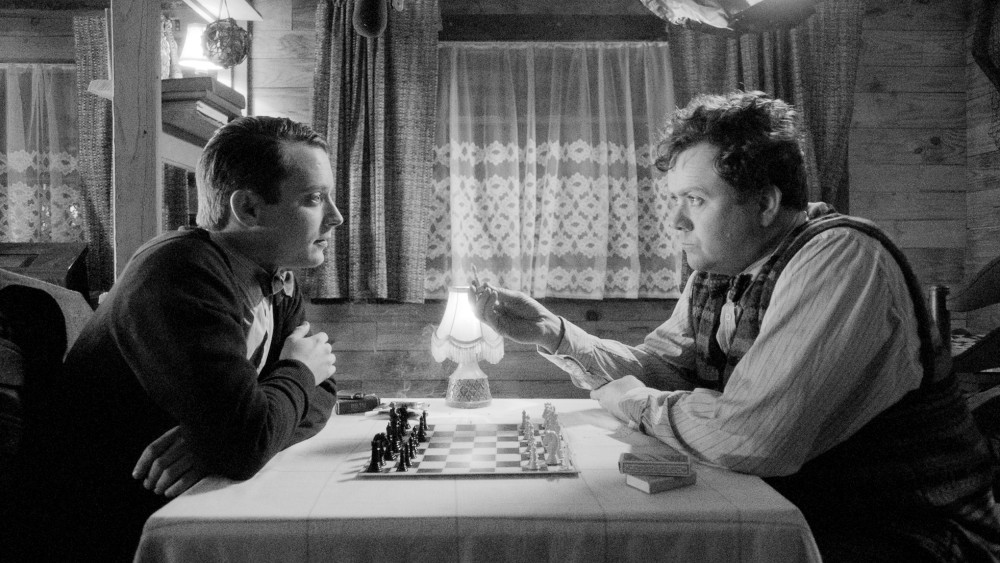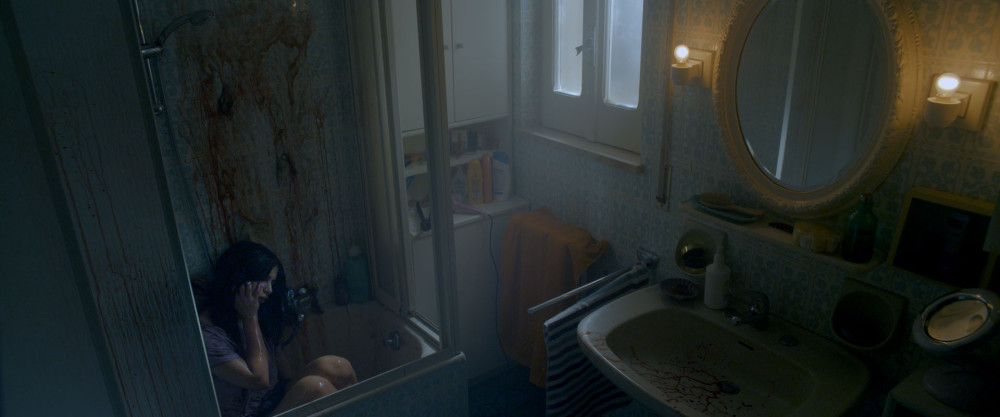The Miami International Film Festival has kicked off this year and while an abundance of my coverage has been for the Miami New Times this year – gotta make that money and what not – I’ve seen more than enough films this year to also spread some love for flicks over here. So on my first night at the festival, after skipping out on my A Pigeon Sat on a Branch Reflecting on Existence out of sheer lack of energy, I checked out two films back to back: Andy Goddard’s Set Fire to the Stars & Aaron Moorhead and Justin Benson’s Spring.
—
Set Fire to the Stars (Andy Goddard, 2014)

At this point in my life, I’ve come to the conclusion that I’ll instantly be curious about a film if Elijah Wood is starring in it. His work in Maniac and Grand Piano in particular (among other genre films he’s been in as of late) has been a delightful surprise, showing a range that few would expect the star of an action-adventure-fantasy series like Lord of the Rings to have. It’s because of that I stumbled into Andy Goddard’s Set Fire to the Stars, a film that, essentially, speculates what John M. Brinnin’s time with the poet Dylan Thomas during his first American tour was like.
Thomas, the man behind that Interstellar quote you may or may not fondly remember (“Do not go gentle into that good night”), was known not only for his poetry, but his alcoholism and late-in-life boisterous attitude, and that’s what Set Fire to the Stars tries to make most memorable. In part, the audience is made to witness Thomas through the eyes of John M. Brinnin, the American poet and literary critic who brought Thomas here in the first place, but also through a sympathetic lens that speculates why the poet might have been as “damaged” as he was.
Because the film covers their journey together, however short it might have been, it shoves a lot of time into a relatively short feature. Even with that, it still finds a way to meander its way to its inevitably bitter ending, though it leaves those who have never read Brinnin’s novel of the experience to wonder if the film’s constantly shifting tone and aimless nature were inspired by the writing. More frustrating though is the way it skits around ever getting too involved with its characters, giving bursts of great writing for the sake of performance and then wavering back into a quiet drama that seems to think more of itself than it should.
But, to fight against the middling at best script, filmmaker Andy Goddard delivers some beautiful work with his debut; gorgeous B&W photography, immaculate production design that masks Wales as New York City, and performances to write home about. While Celyn Jones chews the scenery and really makes one fascinated by Thomas’ character, Wood turns in a reserved performance in which he only pulls out his ACTING! chops in rare moments of vulnerability. It’s actually his performance – and some hints in the writing – that imply Brinnin’s admiration of Thomas was grounded in romantic interest, whether or not he ever openly admitted it (and likely why Strand of all distributors picked it up).
—
Spring (Aaron Moorhead & Justin Benson, 2014)

Practically every review of Aaron Moorhead & Justin Benson’s Spring has mentioned Richard Linklater’s work, as well as H. P. Lovecraft’s. They’re both on point comparisons, and you can pepper in some David Cronenberg there too. Spring is a delightful little work that mixes romantic-comedy and body horror in a rather unusual way (though the genre mix is admittedly unusual by its very nature).
It gets off to a slow-start, no doubt, with Lou Taylor Pucci’s lead character essentially dragging us through the motions of familial death, drunken bar fights, and just generally lame activity until he reaches his Italian destination where he meets the woman of his dreams. Once that’s out of the way, Moorhead & Benson finally get the ball really rolling, brewing up a surprisingly compelling romance between this All-American guy and a woman of totally ambiguous descent who knows all kinds of languages, studies genetics, and, well, transforms into a rather strange creature on occasion.
And what a romance it is! Pucci’s Evan is charming, but it’s all about the talented (and gorgeous) Nadia Hilker as Louise; as well-acted a character as she’s written. Even with as awkward as the male forcefulness of the relationship is at times (his coaxing for her to give up immortality can get nauseating), it’s interesting to watch the two interact simply because they manage to balance the romantic beats with a constant history building behind the “creature” they’ve created.
Louise isn’t what I’d call a “strong female character” by any means – people toss that term (which I’m frankly tired of) around all too casually – but she’s fascinating to look at through a horror stand-point. She’s not only a well-rounded female character, she’s one of the only monsters in a film in a long while that actually has a history presented through narrative that doesn’t remove ambiguity from her design, but instead offers logical reasoning for her character’s existence without taking away the speculative nature of what she truly is.
It’s here where we get the unique aspect of Spring: its insertion of horror (specifically body horror) into your typical Before Sunrise spur-of-the-moment romance narrative (which Moorhead’s long takes mirror pretty nicely in the visuals department just as well). Not only does it have some excellent myth-building (no doubt where the Lovecraftian comparison comes from ), but its use of practical effects for the sake of presenting Louise’s fascinating transformations is so well-done. The filmmakers deliver both laughs and jumps with the body horror present in the film – often as deliciously obscene and grimy as earlier Cronenberg films – and it’s because of how hand-in-hand the genres go that Spring succeeds.
—
Bonus Miami New Times Coverage So Far:
- Todos están muertos (dir. & wri. Beatriz Sanchís)
- A Girl at My Door (dir. & wri. July Jung)
- I nostri ragazzi (dir. Ivano De Matteo, wri. Valentina Ferlan & Ivano De Matteo)
- The Strongest Man (dir. & wri. Kenny Riches)



 Derek
Derek
 Isabelle
Isabelle